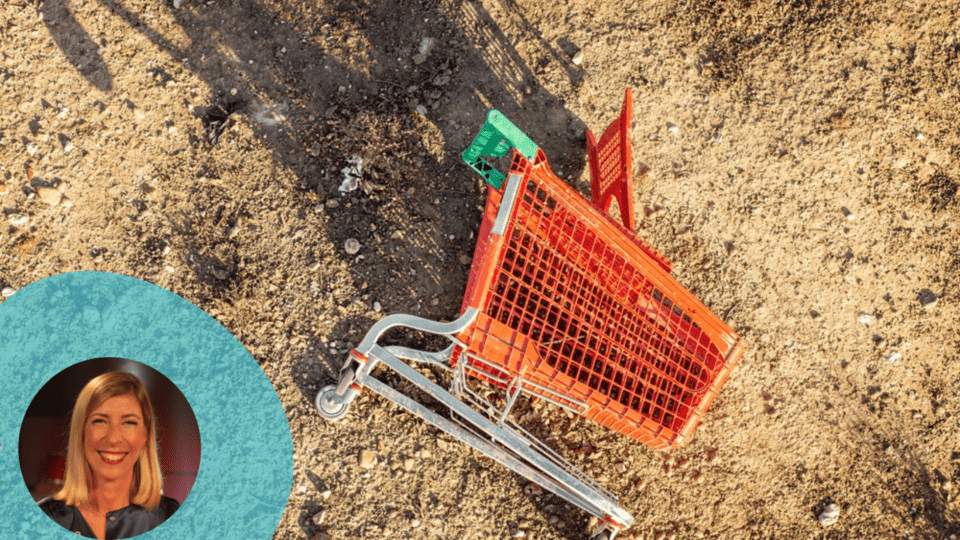When dealing with digital cart abandonment, retailers must focus on what they can control — and that’s delivering a technically sound, flexible and smooth checkout experience.
Consumers, by their nature, are fickle, unsure whether that sweater they added to their digital cart is the one for them. Many are apt to abandon a purchase, maybe because they second-guessed the color or questioned the final price.
It happens. But if consumers don’t buy an item because of an arduous checkout process or technical mistakes, like an autofill feature that inputs the wrong information or a promotion that doesn’t get applied at checkout, then that retailer must take a hard look at the technological backbone of their ecommerce operation.
A positive omnichannel digital experience is, thankfully, in the retailer’s control. Companies can avoid checkout mishaps by implementing a flexible tech architecture and championing a composable approach to their ecommerce strategy.
Why do Consumers Abandon Their Digital Carts?
Research from the Baymard Institute finds that seven in 10 online carts are left abandoned. While most U.S. shoppers skip a purchase because of extra fees and high shipping costs that tabulate at checkout (60%), nearly 30% abandon a purchase because the checkout process is too long or complicated.
Other common reasons why an online shopper may desert an online purchase include:
- Fielding too many upsell opportunities such as suggested product recommendations or warranties along the way to checkout.
- Being forced to create an account.
- Feeling hesitant about the security of the payment feature.
- Seeing items or promotions disappear at checkout.
- Having to wait for webpages to load.
- Needing to restart because the website crashes.
Clearly, there is no shortage of examples for why consumers ghost a digital purchase; consumers can get frustrated in a lot of ways. At the same time, shopper expectations continue to get higher. A report on the state of the digital customer experience found nearly 80% of brands say consumer expectations have increased this year compared to 2023.
To meet escalating consumer expectations across digital experiences, retailers need future-ready, modern technology architectures. Companies that rely on legacy-based architectures will be more susceptible to technical breakdowns during checkout, as IT teams attempt to integrate new solutions with legacy technology. Those companies will struggle to keep pace with consumers that expect a quick, easy and seamless digital checkout.
How Composable Commerce Supports the Checkout Experience
The composable commerce or MACH approach enables retailers to directly address any challenges they’re facing within the checkout process and increase valuable conversions.
Retailers and brands can build composable commerce structures by connecting multiple best-of-breed technology solutions that work in concert to deliver more agile and innovative digital experiences. Legacy architectures tend to be one single platform that can be limited in their scalability and flexibility, and these solutions are often not resilient enough to integrate with new innovations from different solution providers.
Composable commerce is an approach defined by its ability to be flexible enough to adapt to shifts in how consumers shop digitally, changing market trends or the technical hang-ups that might occur during checkout.
Consider the list of consumer grievances above. With a MACH architecture in place, retailers can add or remove technology solutions to address each need. For example, a retailer may discover that one solution within its composable commerce architecture is slowing down the checkout experience by triggering unnecessary pop-up windows and disrupting the checkout process.
In a composable or MACH-based network, the retailer can more easily remove the problematic solution and replace it with a best-of-need alternative that skips offers or delivers them without a pop-up window. Essentially, retailers that develop a clean checkout process can test and try multiple commerce integrations to get the best results possible.
In a study on composable commerce, a survey of brands found that the leading reasons companies adopt composable commerce is to address shifting consumer trends, increase their speed to market and reduce the complexity of their digital experience. Composable commerce empowers retailers to keep pace with consumer needs, convert purchases more quickly and keep consumers loyal through an easy buying process.
Retailers using MACH guidelines to power composable commerce experiences see results such as a faster, one-click payment process, real-time updates to online product information by leveraging cloud-based tools and consistent product information updates, no matter where the consumer shops digitally.
Composable Commerce Puts Retailers in Control
The checkout experience is all about control. A consumer wants the power to make a quick and easy purchase, avoiding distractions or technical hang-ups. Retailers want a technical experience that allows them to choose which solution partners fit best with what they’re trying to accomplish.
A composable commerce framework gives retailers the control they desire alongside an ability to innovate over time. And ultimately, retailers that are in control of the digital experience can reduce cart abandonment, increase conversions and earn the trust of their loyal shoppers.
Consumers can face a lot of hiccups when shopping online, but a composable approach smooths the way forward.
Holly Hall is Managing Director of MACH Alliance, a not-for-profit industry body that advocates for open, best-of-breed technology ecosystems.




